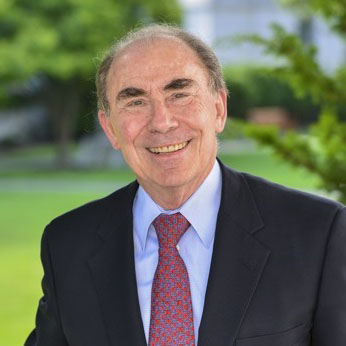An emerging trend for cataract surgery
Sometimes doctors remove cataracts from both eyes on the same day. Is this something you should consider?
- Reviewed by Anthony L. Komaroff, MD, Editor in Chief, Harvard Health Letter; Editorial Advisory Board Member, Harvard Health Publishing

Sometimes both eyes develop cloudy lenses (cataracts) that need to be removed and replaced with artificial ones. Traditionally, the standard approach to do this has been two surgeries — one on each eye, done three to five weeks apart. The entire process and recovery take about two months.
But what if you could speed that up by having both cataracts removed on the same day, in one surgical session? This procedure, called same-day bilateral cataract surgery, is already possible, and a growing number of people are choosing this approach.
“It’s not common, but it’s increasing in the United States. People are becoming aware that it’s a realistic and safe option,” says Dr. Grayson Armstrong, a complex cataract surgery specialist at Harvard-affiliated Massachusetts Eye and Ear.
Same-day surgery benefits
Same-day bilateral cataract surgery has many potential benefits:
Half the ordeal. Even though cataract surgery isn’t painful and has a low risk of complications, it can still be somewhat stressful. It may provoke anxiety, and it requires a recuperation period, time off from a job or caregiving, and the use of several types of eyedrops during recovery. Enduring the process once, instead of twice, might be appealing, though it means you’ll have some discomfort and reduced vision in both eyes for several days.
Better vision, faster. Swapping a single cataract for a clear lens improves your vision right away. But when surgeries are spaced apart, there’s an awkward period of seeing well in just one eye. “For a few short weeks, you might have balance issues, your glasses might not work, you might have trouble reading, and you might not see what you’re doing clearly at work or when you’re driving.” Dr. Armstrong says. “With the same-day surgery, vision in both eyes is corrected immediately.”
Less expense. Both approaches are covered by Medicare and most other insurance, but traveling to a hospital or clinic for the surgery and postoperative care can be expensive and time-consuming, particularly if it’s a long distance.
Same-day safety
Cataract surgery is one of the safest surgeries in all of medicine, but it has the potential for infection, which can lead to vision loss. “That risk is very low, especially in developed countries. For example, the U.S. rate of infection from cataract surgery in one eye is estimated to be between 0.01% and 0.09%. With close to four million cataract surgeries performed each year in the United States, that’s about 400 to 3,600 people,” Dr. Armstrong says.
What’s the infection risk if you have both eyes corrected at once? “The evidence suggests that bilateral surgery causing infections in both eyes at the same time is exceedingly rare,” Dr. Armstrong says. “And both types of surgeries have the same risks for potential issues like swelling in other parts of the eye. In other words, the risks are the same for same-day surgery and for surgery separated by weeks or months.”
How common is it?
For all of the benefits of same-day bilateral surgery, it’s still a rarity in the United States — occasionally offered for convenience, but mostly reserved for people with risks of going under anesthesia more than once and those with mental or physical disability.
“A 2022 study that looked at data from Medicare patients undergoing cataract surgery from 2011 to 2019 found that out of two million cataract surgeries, only about 4,000, or 0.2%, were performed on the same day. But it was closer to zero percent for a long time. The numbers are starting to move upward slowly,” Dr. Armstrong says.
One possible indication that use of this approach is increasing, he says, is that the same-day bilateral surgery is more frequently discussed among physicians and at medical conferences. And ads for the double procedure are popping up on ophthalmology websites.
It’s more common in other countries. “For example, studies have suggested that at least 6% of cataracts are removed this way in Sweden,” Dr. Armstrong says.
Why the slow uptick?
“Cataract surgery has an incredible impact on someone’s vision. It allows them to see their grandkids and play golf again,” Dr. Armstrong says. “But we want to avoid risks and complications at all costs, and my sense is that this has steered a lot of surgeons away from performing same-day bilateral surgery — out of fear that vision loss could possibly occur in both eyes at the same time. It’s taking time for doctors to gain the confidence to do the procedure,” Dr. Armstrong says.
Another possible reason: “Some studies suggest that vision clarity might not always be as good with same-day surgery, although the jury is still out,” Dr. Armstrong says. “One of the things we like about doing cataract surgery on two different days is that we can learn about the outcomes of the first surgery to fine-tune the surgery for the second eye.”
What you should do
Dr. Armstrong says that same-day bilateral cataract surgery is a safe and realistic option, and he expects that it will continue to gain widespread acceptance as a method of convenience. But the procedure isn’t for everyone, particularly not people with eye disease, a history of eye injury, or an increased risk for complications.
If your eyes are healthy, there’s a good chance you won’t have problems getting both of them fixed at once, Dr. Armstrong notes. “Many studies show it has advantages for the right patient,” he says.
It’s best to choose a surgeon who has performed a large number of cataract surgeries, including bilateral same-day procedures. The chance of finding such a surgeon might be better at an academic medical center.
“Today, compared to just 10 years ago, it’s easier to find surgeons experienced in these same-day procedures,” Dr. Armstrong says.
This article is brought to you by HarvardHealthOnline+, the trusted subscription service from Harvard Medical School. Subscribers enjoy unlimited access to our entire website, including exclusive content, tools, and features available only to members. If you're already a subscriber, you can access your library here.
Image: © Nastasic/Getty Images
About the Author

Heidi Godman, Executive Editor, Harvard Health Letter
About the Reviewer

Anthony L. Komaroff, MD, Editor in Chief, Harvard Health Letter; Editorial Advisory Board Member, Harvard Health Publishing
Disclaimer:
As a service to our readers, Harvard Health Publishing provides access to our library of archived content. Please note the date of last review or update on all articles.
No content on this site, regardless of date, should ever be used as a substitute for direct medical advice from your doctor or other qualified clinician.
















